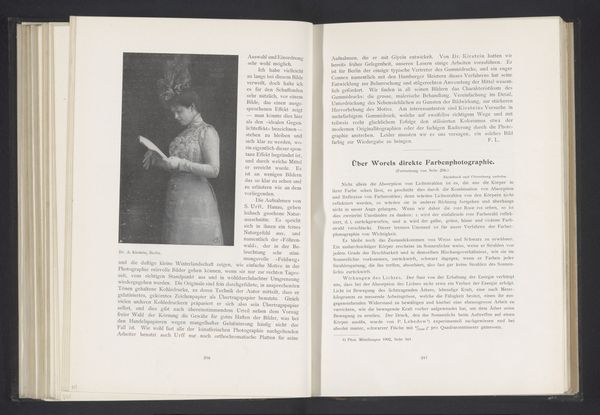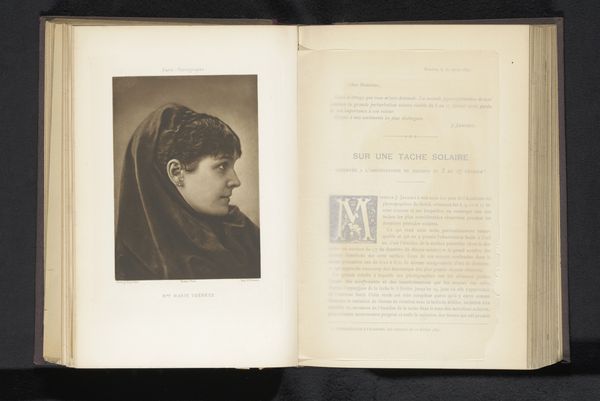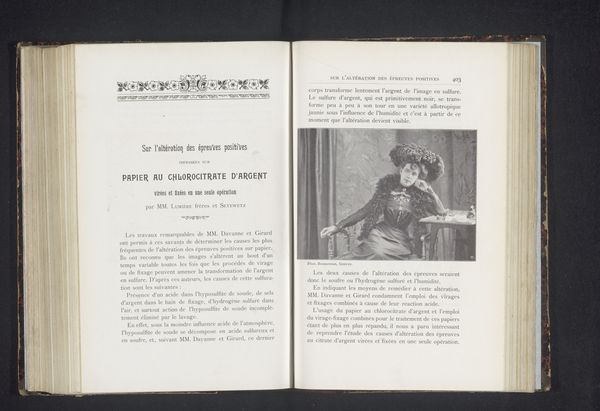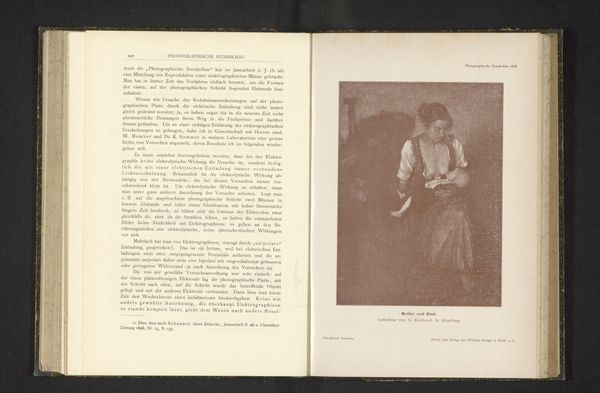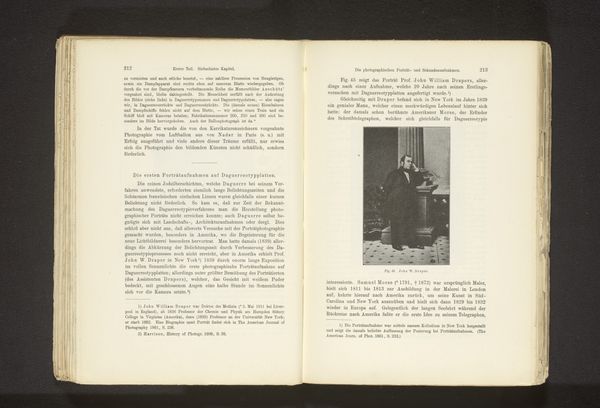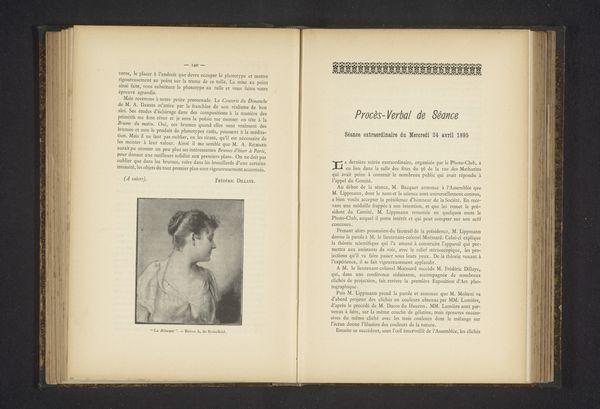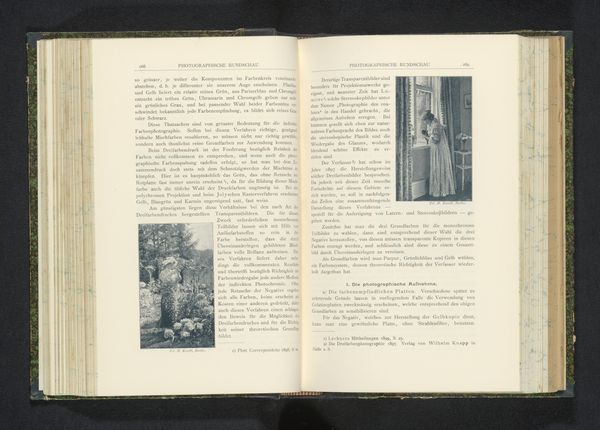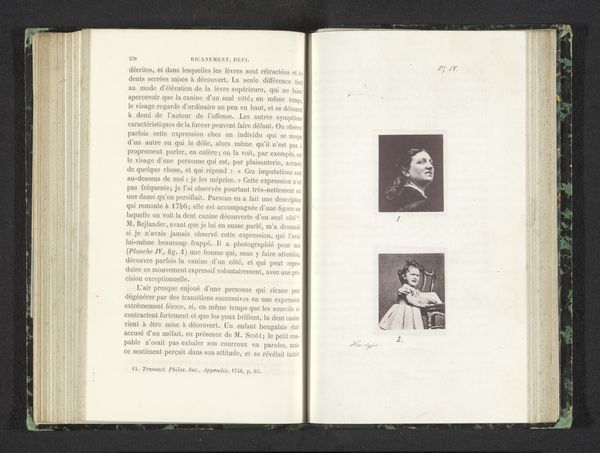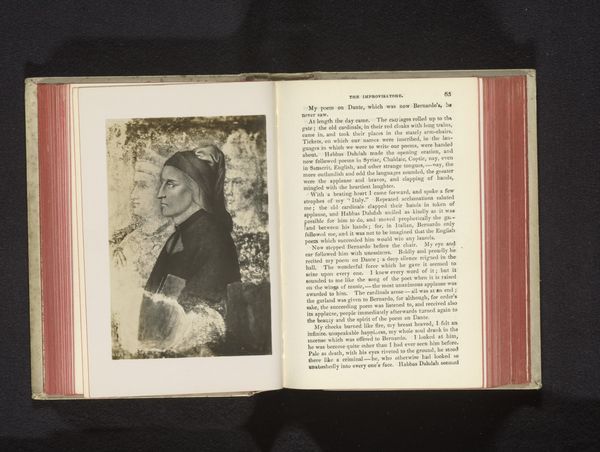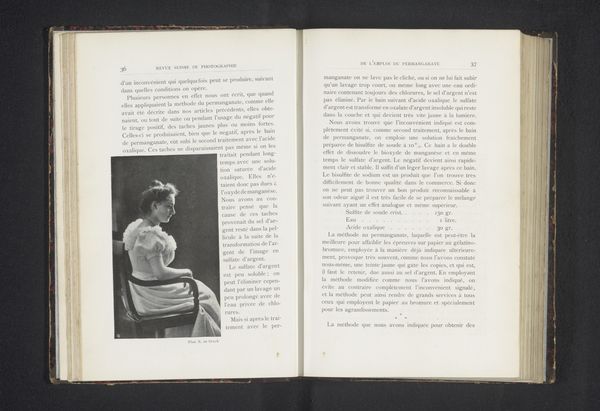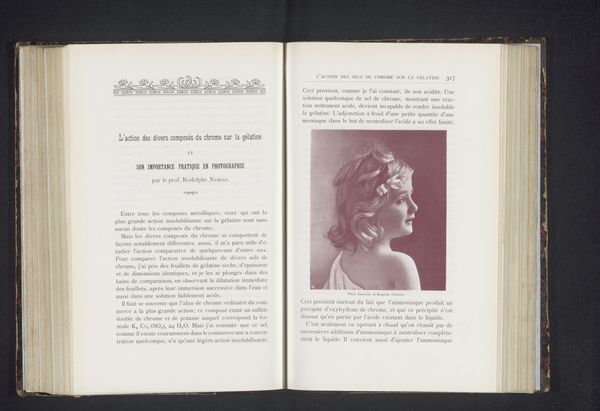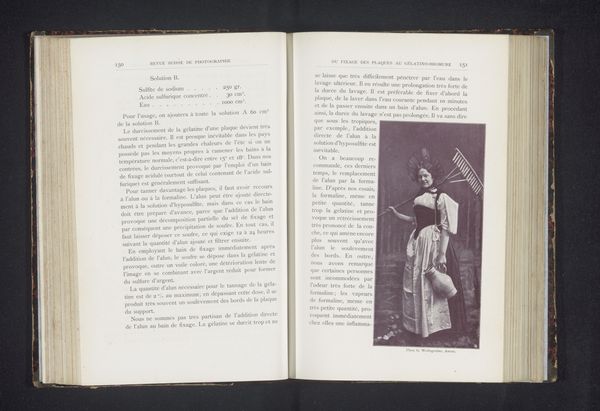
print, photography, gelatin-silver-print
portrait
photography
gelatin-silver-print
academic-art
Dimensions: height 132 mm, width 91 mm
Copyright: Rijks Museum: Open Domain
Curator: This intriguing portrait, titled "Portret van een onbekend meisje," meaning "Portrait of an Unknown Girl," dates from before 1902. It’s a gelatin silver print, a photographic process that gained prominence in the late 19th century. What strikes you first? Editor: There's a serene gravity to her gaze, averted as it is. The tonal range within this silver print enhances her rather modest demeanor. I’m intrigued by the geometry formed between her dark clothing, contrasting skin, and that angular hat—it frames her beautifully, doesn’t it? Curator: Absolutely. The formal elements contribute to the sense of restrained composure typical of academic portraiture. But consider the material context: this print wasn't intended as a standalone artwork but appears within the pages of a printed volume. Perhaps illustrating photographic methods or fashion trends of the time? Editor: Interesting! The printing process is clearly crucial to how we perceive this girl's image. I’d say this medium is what provides the stark monochrome, contributing significantly to that overall subdued effect that has caught my eye! Curator: Precisely! Understanding that this is a gelatin silver print offers insight into the widespread adoption of photography within both the art world and print culture during that period. Moreover, one has to appreciate the historical labor needed in print shops as image consumption rose due to innovations in techniques. Editor: Yes, even her clothing evokes associations, not of luxurious finery but rather typical, somewhat dark everyday wear from her time. Still, within these modest parameters, notice how the photographer utilizes subtle gradients of grey to emphasize her delicate features! Curator: Examining those formal and material decisions, as you have keenly observed, allows a broader analysis to evolve concerning class and access regarding photographic representation at the turn of the century. The technology mattered and transformed society as we knew it. Editor: Reflecting, the very limitations of monochromatic photography here guide us toward appreciating tonal subtleties. We’re reminded of beauty residing often not in splendor but in nuanced moments like this. Curator: And understanding this photograph not just as an artistic likeness but as a mass-produced artifact gives another depth, demonstrating how portraiture democratized in an age of burgeoning visual culture.
Comments
No comments
Be the first to comment and join the conversation on the ultimate creative platform.
